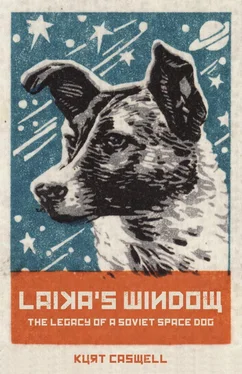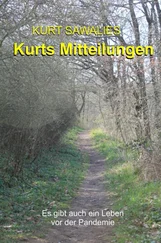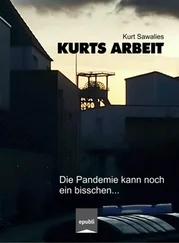¤
In 1955 the Soviets began construction of a new spaceport in Kazakhstan about five hundred miles east of Kapustin Yar, at the edge of the Kyzl Kum desert. This new, modern facility—now known as Baikonur Cosmodrome—was the largest spaceport in the world, and it remains so to this day. All crewed missions launched from present-day Russia fly out of Baikonur, including those carrying American astronauts. It was here that the team tested and perfected the R-7 rocket, the world’s first ICBM, the rocket that carried Sputnik I, Sputnik II and Laika, and the first human, Yuri Gagarin, into orbit. Baikonur was built in part to accommodate the R-7 rocket. It was just too big and powerful to be launched from Kapustin Yar. And so successful was the R-7 that the Soviets used its basic design as the foundation for a whole family of rockets. To date, more R-7 rockets have been launched than any other comparable family of rockets in the world. The spaceport is known colloquially as Gagarin’s Start, but it is also sometimes called Tyuratam because it is close to the village of Tyuratam. In time, a town grew up out of the desert to serve the spaceport, and it was named Leninsk. In 1995 President Boris Yeltsin changed the town’s name from Leninsk to Baikonur.
Like Kapustin Yar, Baikonur was a desolate place—cold, wind-battered, and isolated. It was about as far from the glamor and beauty of Moscow’s Bolshoi Theatre or Leningrad’s Church of the Savior on Spilled Blood as a man could get. Yet it was also a place of great activity, energy, and excitement, as some of the world’s most secret and most advanced technologies were being developed and tested here. Not long after the spaceport’s completion, the R-7 rocket carrying Laika shattered the morning quiet, marking a major turning point in Soviet, and world, space exploration. From that moment forward, rockets and their spacecraft would no longer be flown solely to the edge of space but into Earth orbit and, following that, to the moon, and then deeper and deeper into our solar system.
¤
Some three years after Laika’s flight, Lisichika (Little Fox) and Chaika (Seagull) were scheduled for an orbital test flight on an R-7 rocket in the prototype of the new Vostok spacecraft. The flight, scheduled for July 28, 1960, was a critical test of the Vostok, which in about a year’s time would take Yuri Gagarin into orbit. Khrushchev had explained to Korolev that he would be held personally responsible if an American astronaut was first into space. You can imagine what was riding on these two little dogs: Korolev’s reputation and place in the pantheon of Soviet heroes, the space dog and the rocket program itself, and the world’s regard for the power and position of the Soviet Union. In effect, everything.
Korolev, the man whose keen focus and hard edges were legendary, whom most of his engineers and scientists feared, kept a quiet fondness for Lisichika. She was one of his favorites. How this unfolded we can only imagine. Perhaps it arose from a singular incident when Lisichika was first brought into the kennels and needed someone. Perhaps Korolev gave her food and water on one of his morning rounds, and she gave him a wagging dance and a soft look about her eyes, which softened him. Or perhaps over time she warmed to him, and he to her. We cannot know. Despite his fondness for Lisichika, Korolev regarded her as a highly trained space dog, a working animal. She was not a pet. In fact, his love for her may have stemmed, in part, from what she could do for him, what she could do for the Soviet Union. The investment in her had to be returned to the program and to the country, and so she would have to fly. On the day that Lisichika was scheduled to fly, Korolev bent to her ear and whispered: “It is my deepest desire that you come back safely.”
Waiting on the launchpad inside the capsule, Lisichika and Chaika felt the vibration and storm of the engines igniting, their burning roar, readying to lift that rocket into space. In that critical moment, as the team waited for the rocket and the dogs in which their lives were so invested to rise into the heavens, a strap-on booster broke loose and fell away. The rocket exploded on the launchpad. Both dogs were killed.
¤
Inside the Memorial Museum of Cosmonautics in Moscow are two glass cases housing the dead and stuffed space dogs Belka and Strelka. The cases are positioned on either side of the capsule inside which they rode into space. The capsule is dented near the bottom where it impacted the ground. Belka sits on the right side of the capsule with her pointy nose, her mouth in an eerie grin, her toenails too long. Her head is positioned upward and at an angle, so that upon approaching her, she seems to look beyond you, into a distant corner of the ceiling. Strelka, on the left side, is seated too, almost crouched. Her eyes gaze upward as if looking at the person standing over her or perhaps looking at the stars. In Soviet Space Dogs , Turkina writes that likenesses of Belka and Strelka are often positioned this way, “looking toward the heavens” because their “portrait evokes the iconography of the heroic human pilots portrayed in Soviet paintings and posters: always moving upward, always toward the sky.”
During my visit to the museum, I stood for some time before the capsule and the dogs. I had read about them, read the details of their story, and I had looked closely at photographs of the dogs taken before and after their flight. While they were but objects now, preparations of remnant skins, I could sense something of what the dogs had been. They came to life for me in a way that fails a photograph. Standing in their presence, they were no longer lost in a past I had not lived but were part of a present I was now living. Somehow, standing there, I felt closer to Laika too, who had gone out of this world and come back into it, both times in a blaze. Like me, Laika had been separated from Belka and Strelka by time, even if only a few years. Yet the way time pools in such a moment in the presence of the dead, you can believe without proof that the threshold of time, both into the past and into the future, is possible to reach across.
After Laika, Belka and Strelka are the most famous space dogs of the Soviet program. They achieved what Lisichika and Chaika did not: they became the first living beings to orbit the Earth and be recovered safely. They proved that the life-support systems on the Vostok and the newly developed hardware for deorbiting a spacecraft worked, and that the USSR now possessed the technology and know-how to put the first human being into space.
Belka (Squirrel) weighed just twelve pounds and measured eighteen inches long and twelve inches tall. She was nearly all white but for her sides and short, stiff ears, which were tinted yellow. Belka’s broad, stout-looking head distinguished her from Strelka (Little Arrow), who was more gracile, leaner and longer, though she too weighed twelve pounds. Strelka’s head, back, and sides were marked by dark brown patches, and her ears look softer, more pliable, which gave her an amiable countenance. In some photographs, Strelka’s ears are laid back or bent down but not floppy like a yellow lab’s. In publicity photos and on TV, Belka typically wore a red flight suit while Strelka wore green. Belka had originally been called Albina (though she is not the same Albina who was Laika’s second for Sputnik II ), and Strelka had been named Marquise. Turkina reports that it was the commander-in-chief of the Strategic Missile Force, Marshal Mitrofan Nedelin, who thought the names too French, too bourgeois, and so directed the team to give the dogs strong Russian names.
With the success of their flight, the world fell in love with Belka and Strelka. Their images were widely published. They made radio and TV appearances and were trotted out for display before crowds of citizens and dignitaries. They were featured in newspaper and magazine stories, and their tale of heroism was retold in children’s books and more recently in animated films. Like Laika, their images were fashioned into porcelain figurines and appeared on stamps, ornamental wooden boxes, confectionery tins and chocolate boxes, badges, postcards, cartoons, you name it. Fan mail poured in. There was no pop culture in the Soviet Union in those days. “Under socialism the niche occupied by popular culture in capitalist society was subject to strict ideological control,” Turkina writes. “Paradoxically, Belka and Strelka became the first Soviet pop stars.”
Читать дальше












